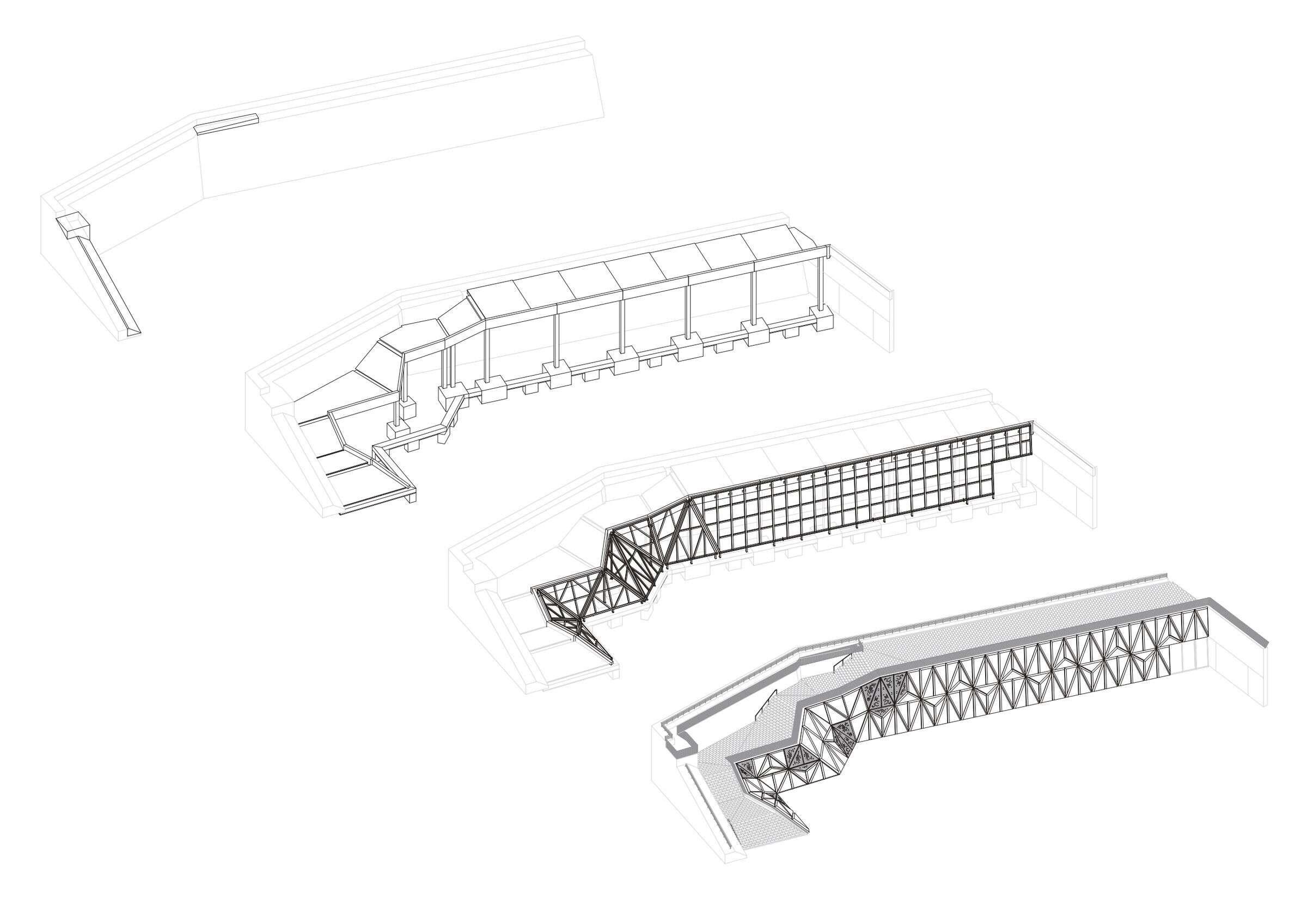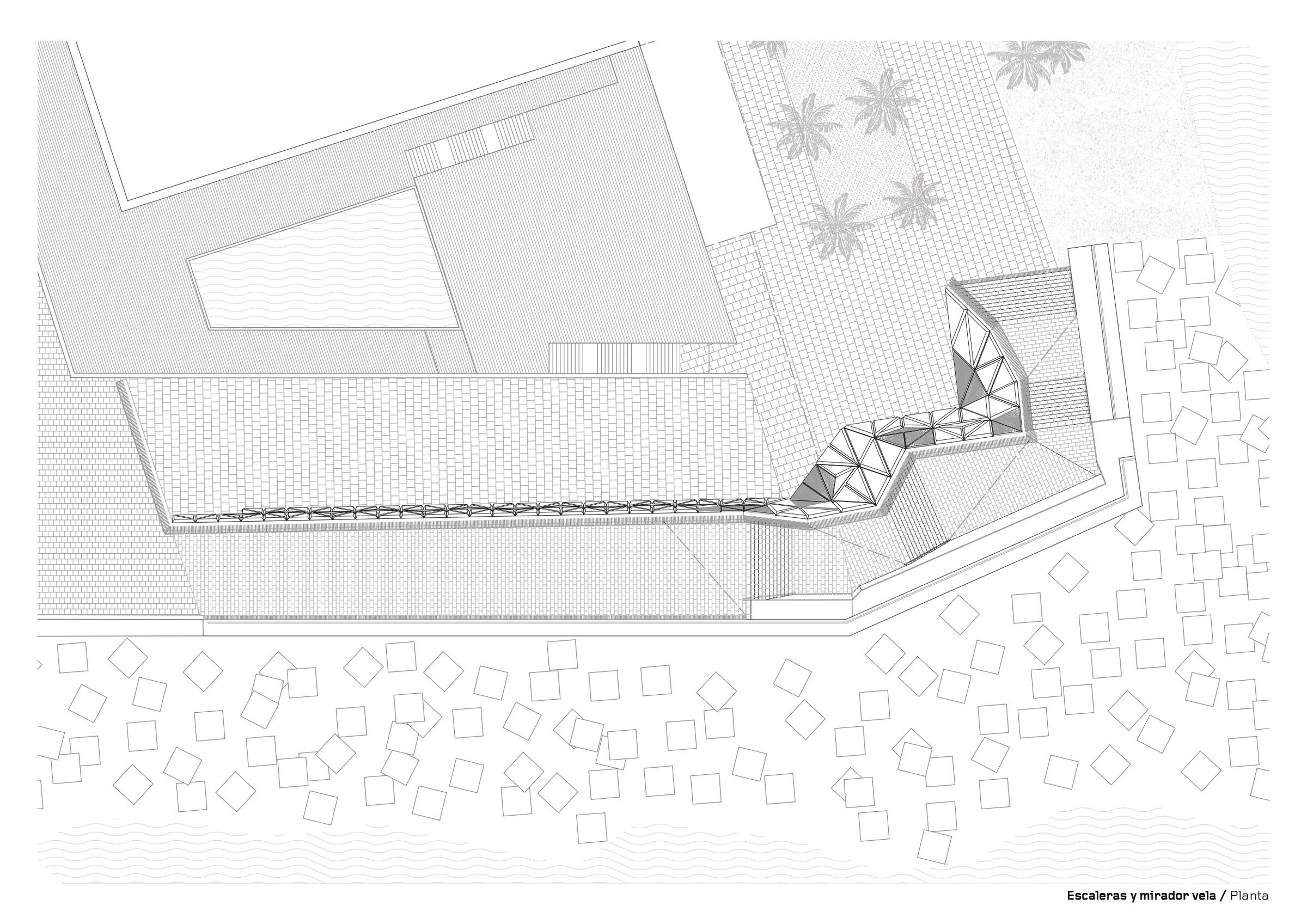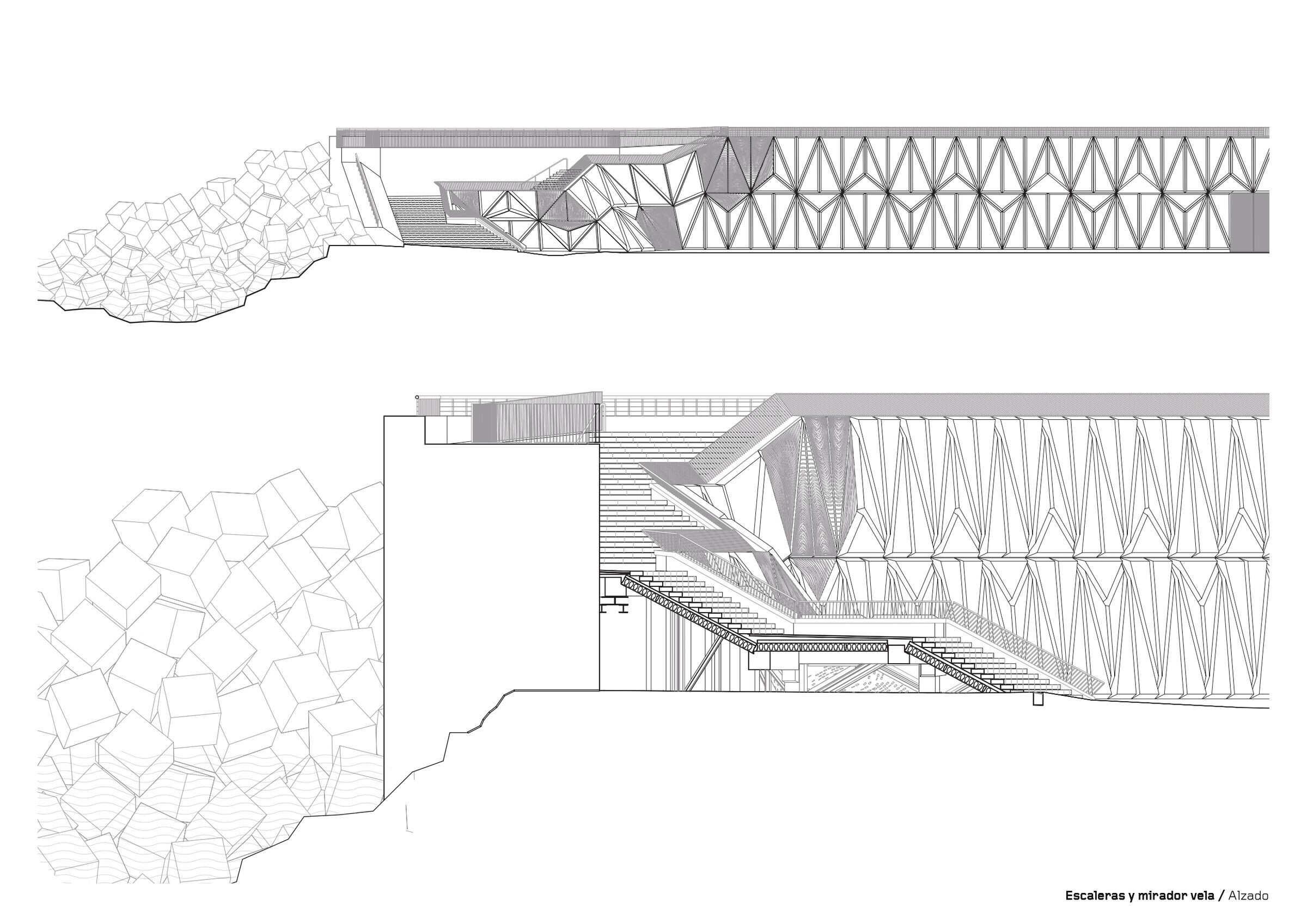"This project, on the one hand is inevitable, and on the other, very representative. The culmination of Passeig del Mare Nostrum with a walkable façade is proposed as a fundamental element that reconfigures the city's relationship with the sea," says architect Carmelo Zappulla, founder of External Reference.
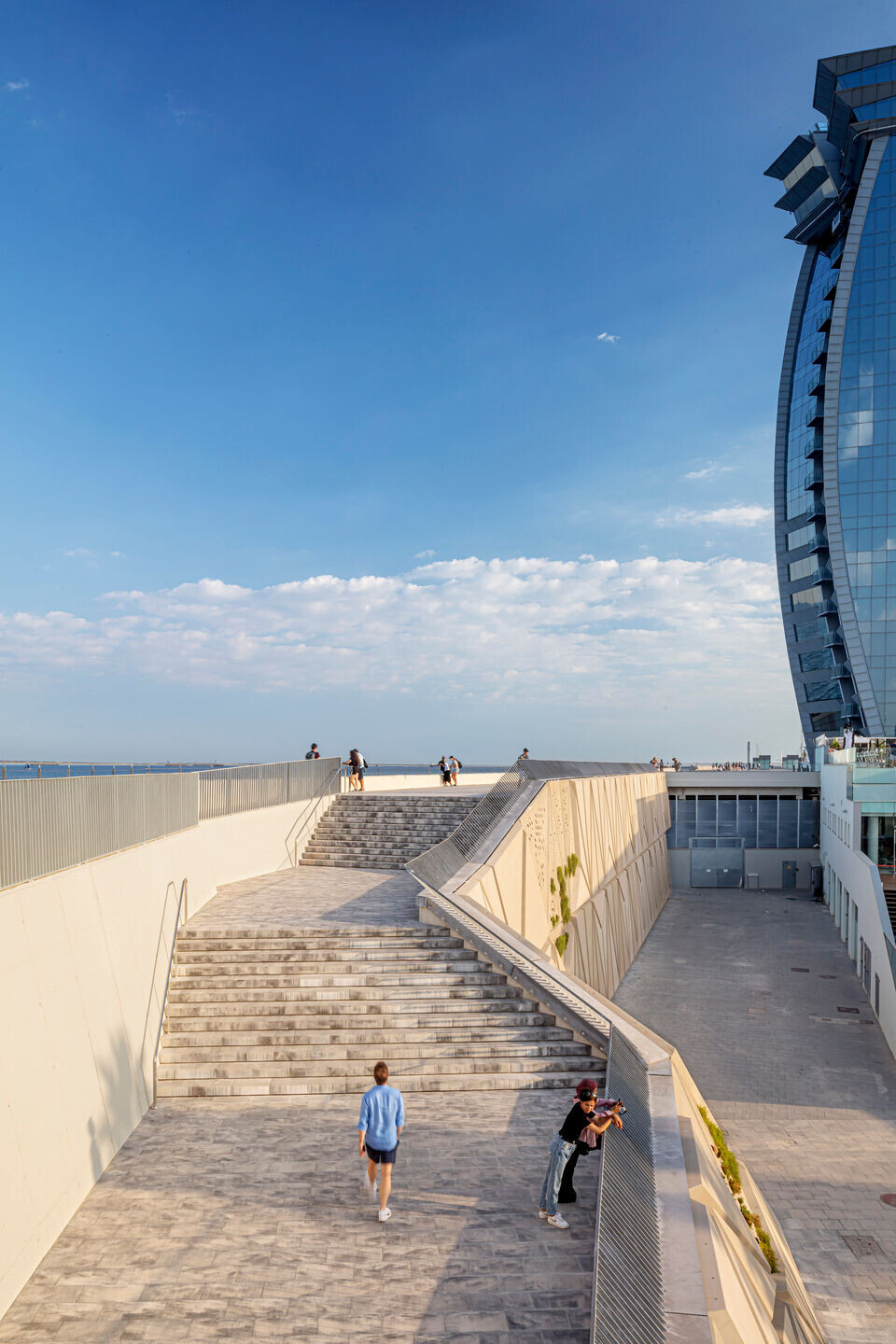
External Reference presents a new architecture and urban planning project on the Barceloneta seafront, creating a new balcony overlooking the Mediterranean as a unique viewing platform over the city, and connecting the Passeig del Mare Nostrum with Plaça de la Rosa dels Vents in Barceloneta.
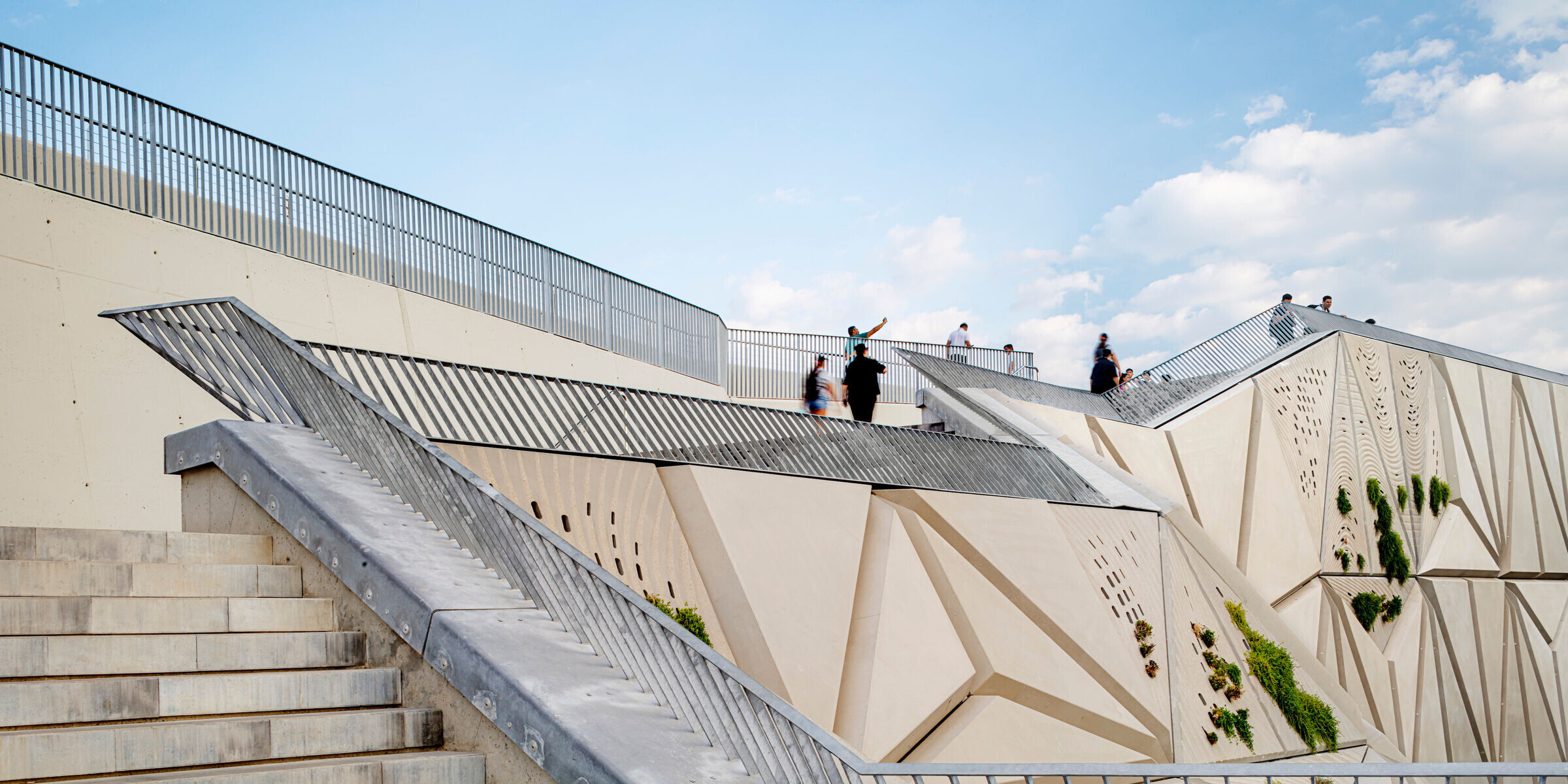
Recently opened to the public "Escaleras y Mirador Vela" is a new project of the architecture firm External Reference, led by architect Carmelo Zappulla, which for the first time generates a connection between the Passeig del Mare Nostrum and the Plaça de la Rosa dels Vents, on the beachfront of La Barceloneta. The project includes a walkable architectural façade consisting of a staircase and an elevated walkway rising +9.30 meters.
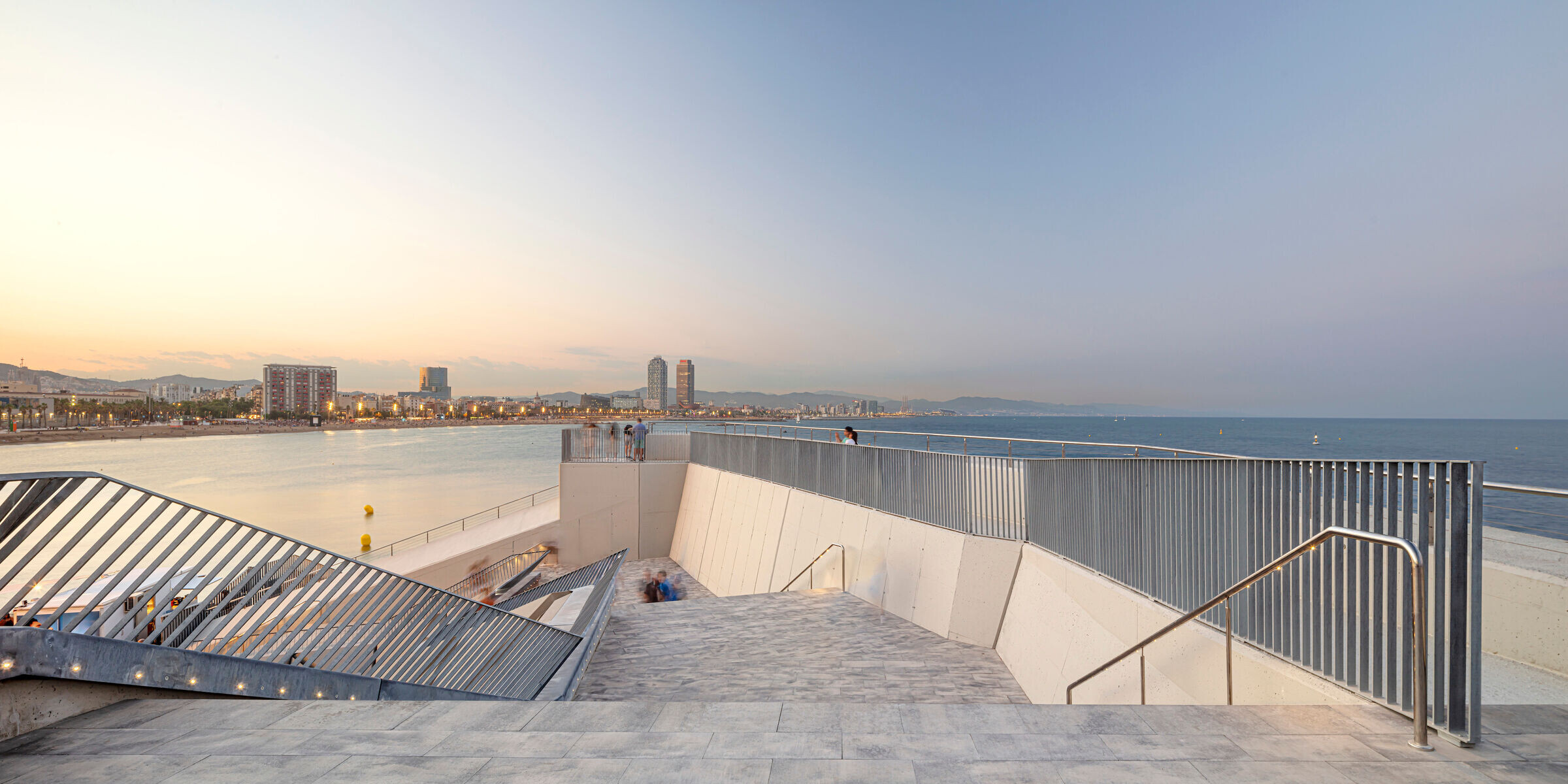
External Reference's urban planning intervention improves the public access of the area around the W Hotel and is located within the framework of the PlanEspecial for the Nova Bocana of the Port of Barcelona, commissioners of the project.
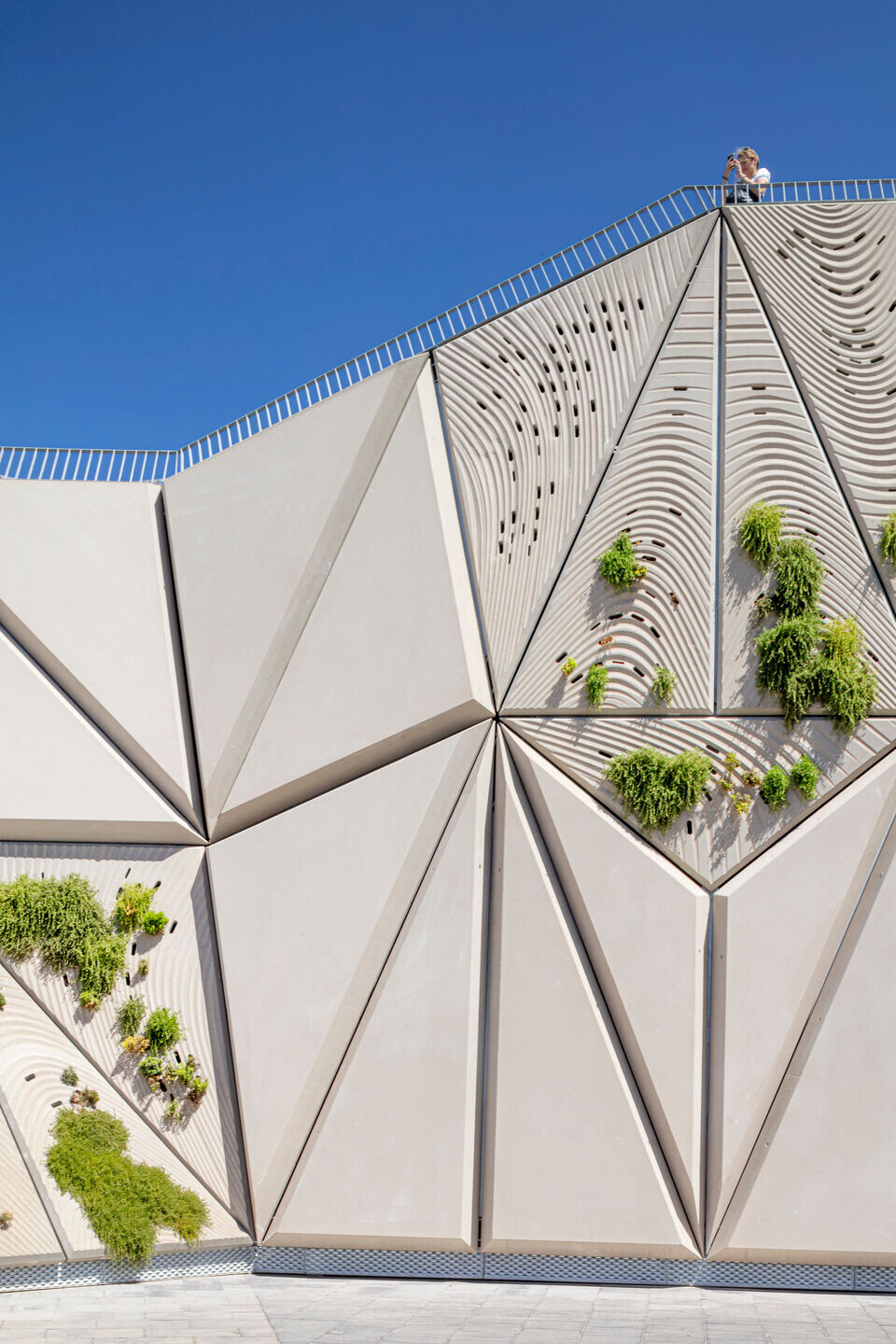
The project interprets a special port context: the connection develops a new relationship with the W Hotel, where the strong tides of the sea coexist with a unique concentration of people and users who carry out a variety of outdoor and leisure activities on a daily basis.
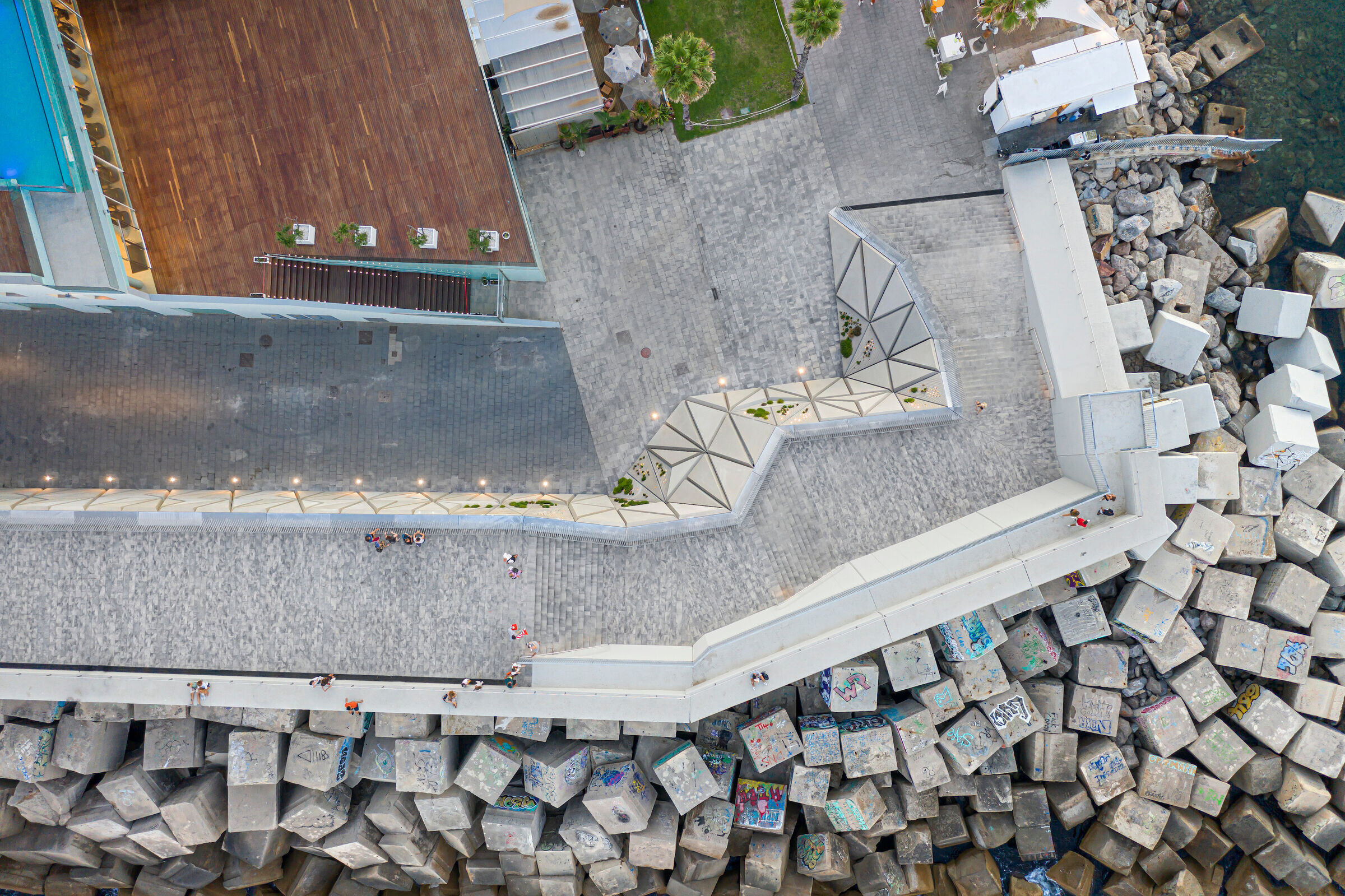
According to the requirements of Nova Bocana, it was necessary to design a solution that eliminates the existing cul de sac and connects the two different levels using the existing seawall as support. This provided an opportunity to generate a new façade for the Passeig del Mare Nostrum.
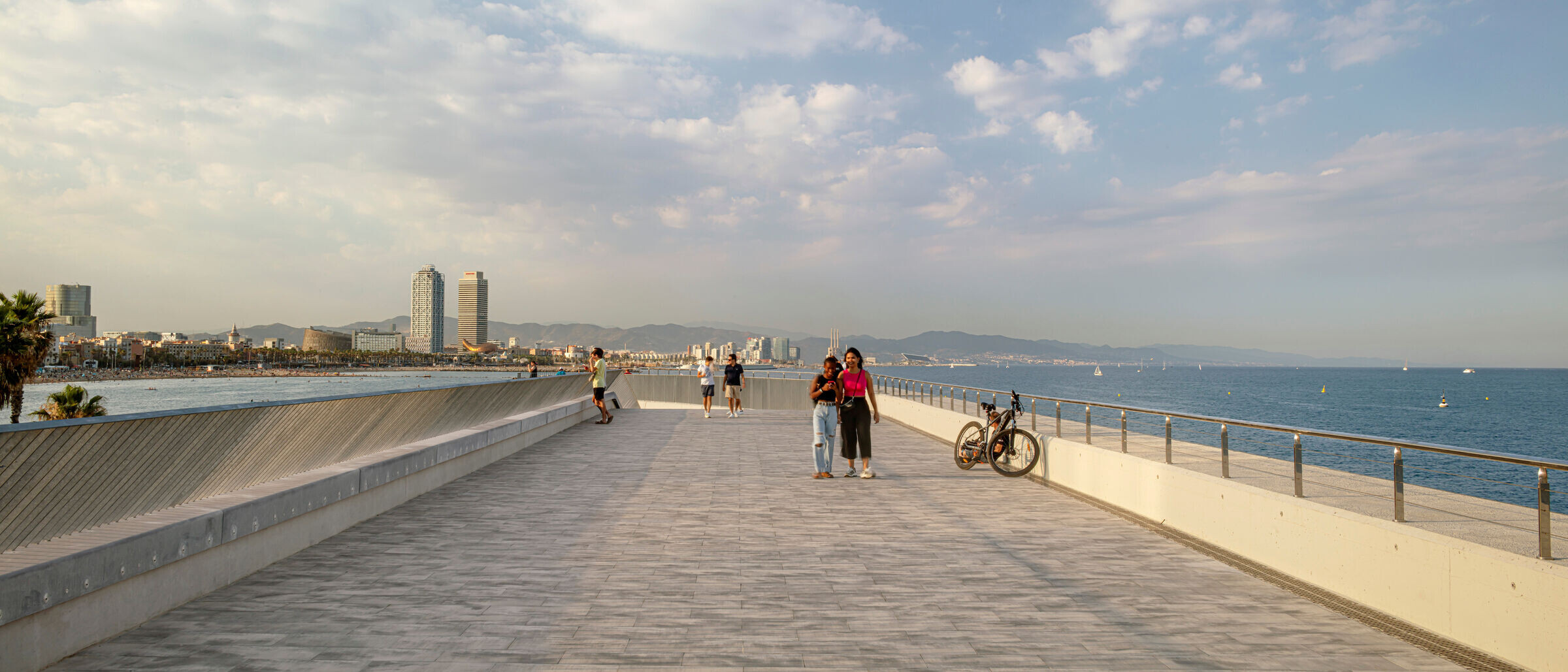
"This project, on one hand is inevitable, and on the other, very representative. The culmination of Passeig del Mare Nostrum with a walkable façade is proposed as a fundamental element that reconfigures the city's relationship with the sea," says architect Carmelo Zappulla, founder of External Reference.
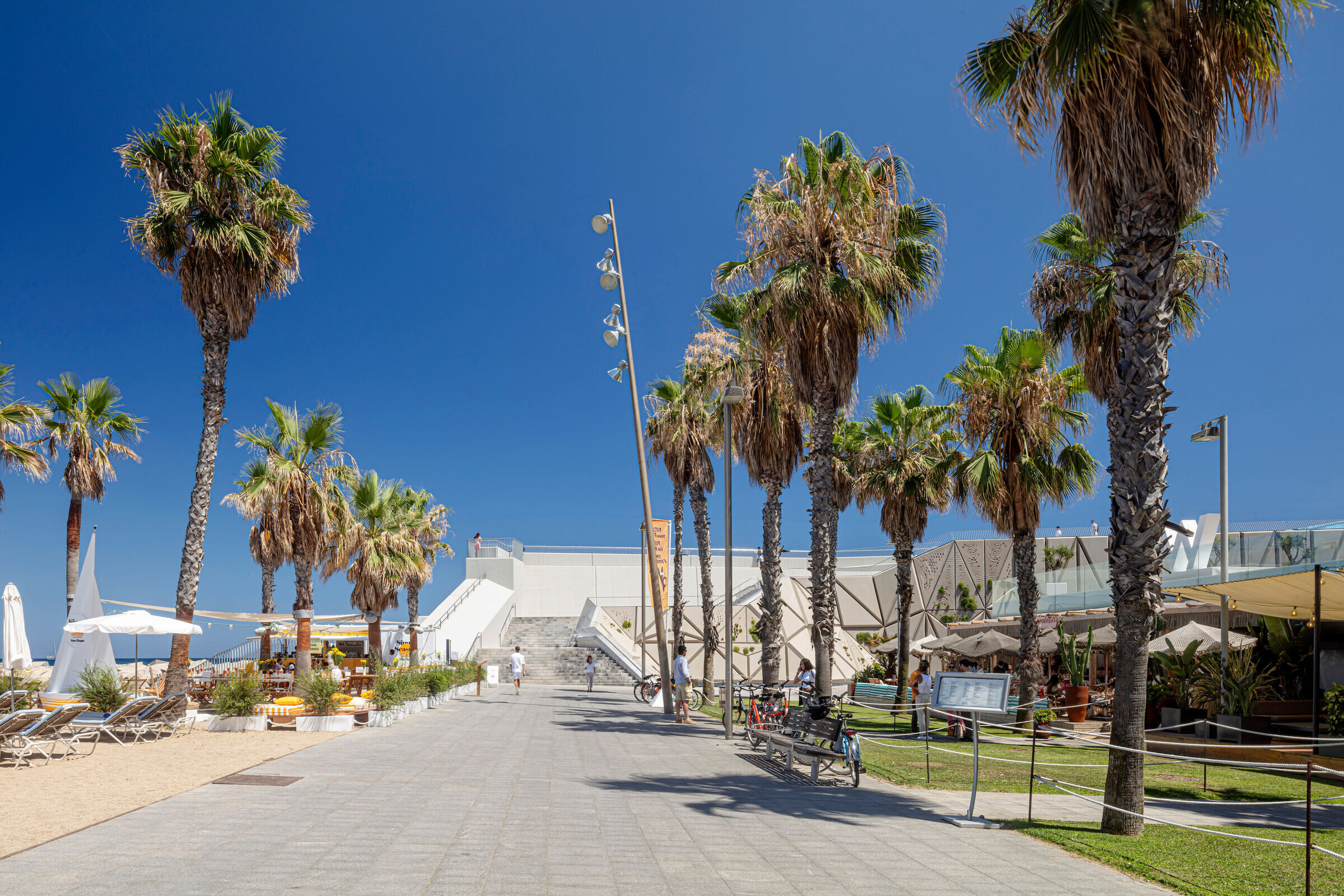
The design was conceived as a tectonic element that derives its morphology from the formations of salt crystals that grow in the small Mediterranean water reservoirs, captured by the irregularities and accidents of the marine rocks. Based on this phenomenon, the staircase "crystallizes" in the existing nook at the intersection of the promenade of the Barcelona coastline and the monumental seawall that protects it from the rush of the Mediterranean tides.
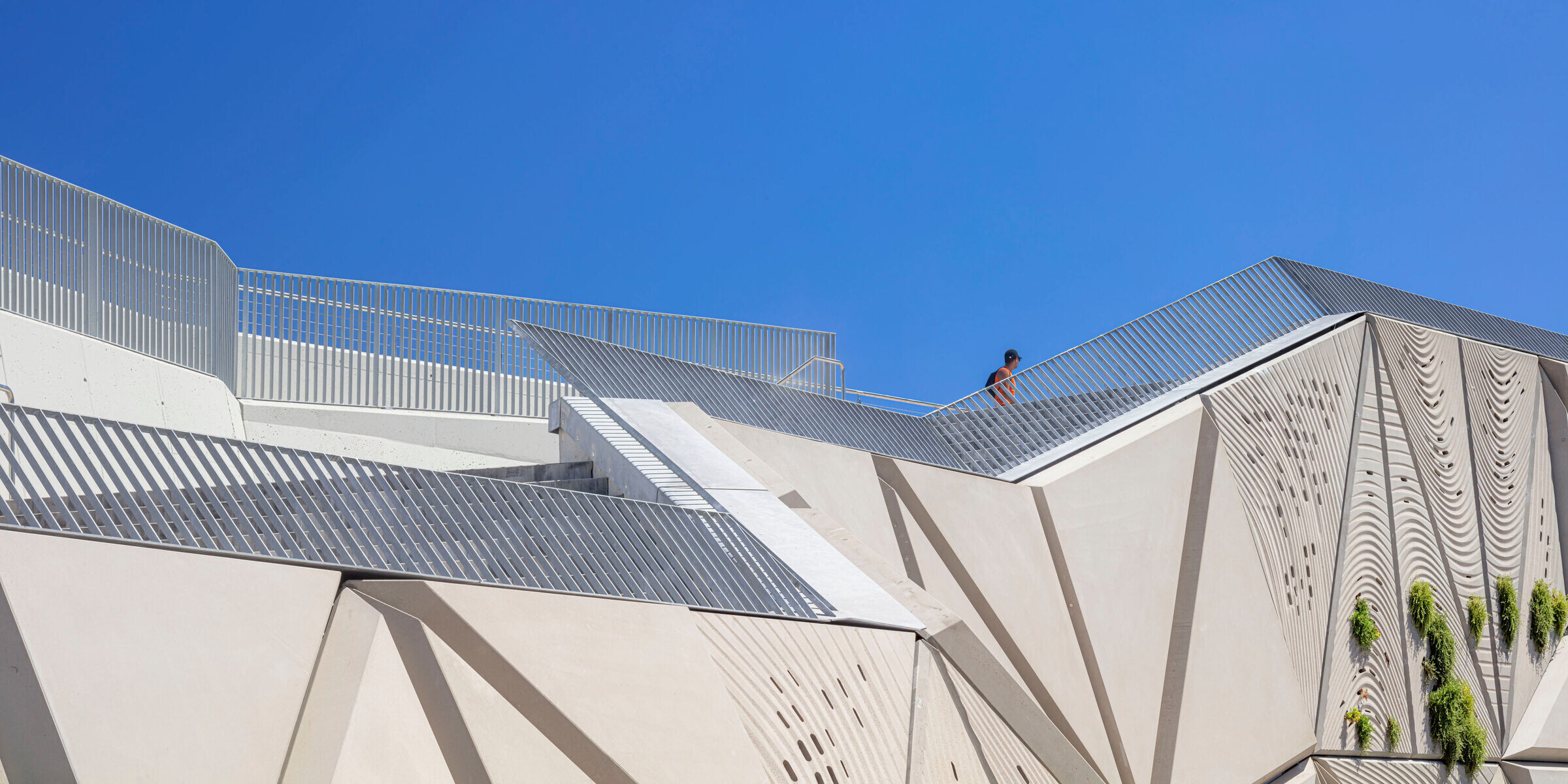
From a compositional point of view, "Escaleras y Mirador Vela" is developed as a sculpture between the existing seawall and the new façade that opens up to the promenade, inviting the public to experience a new urban space that projects towards the sea and generates a balcony overlooking the Mediterranean and the city. The new promenade is a prefabricated concrete structure. The new façade it creates toward the seafront promenade is clad with triangular concrete bio-receptive panels that incorporate the use of low-maintenance vegetation and a lighting system. The panels were optimized utilizing parametric strategies, and were designed in a way that encourages the surface growth of native plants (Lobularia Maritima, Lampranthus Spectabilis, and Drosanthemum Floribundum).In addition, it integrates a fiber optic lighting system that makes its surface vibrate at sunset.
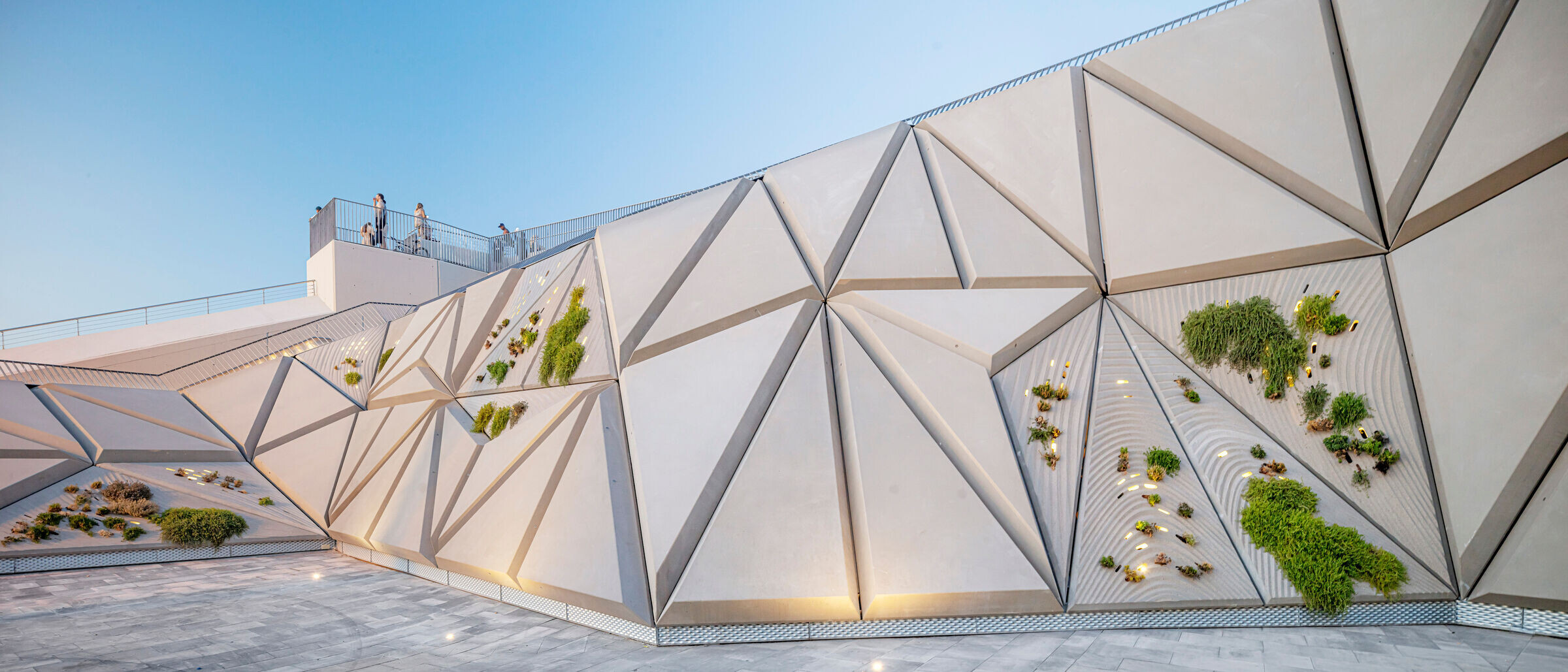
"We have designed a unique place for the city, and a space where you can not only appreciate looking towards the horizon of the sea, but where you can also discover new viewpoints of Barcelona, the great protagonist of the project," Zappulla explains. "We believe that the path will act as a catalyst that transforms the dynamics between the square and the promenade which, although adjacent spaces, until now had separate activities. They are now dialogic parts of a chain of discoveries and experiences that pass through Escaleras y Mirador Vela"."
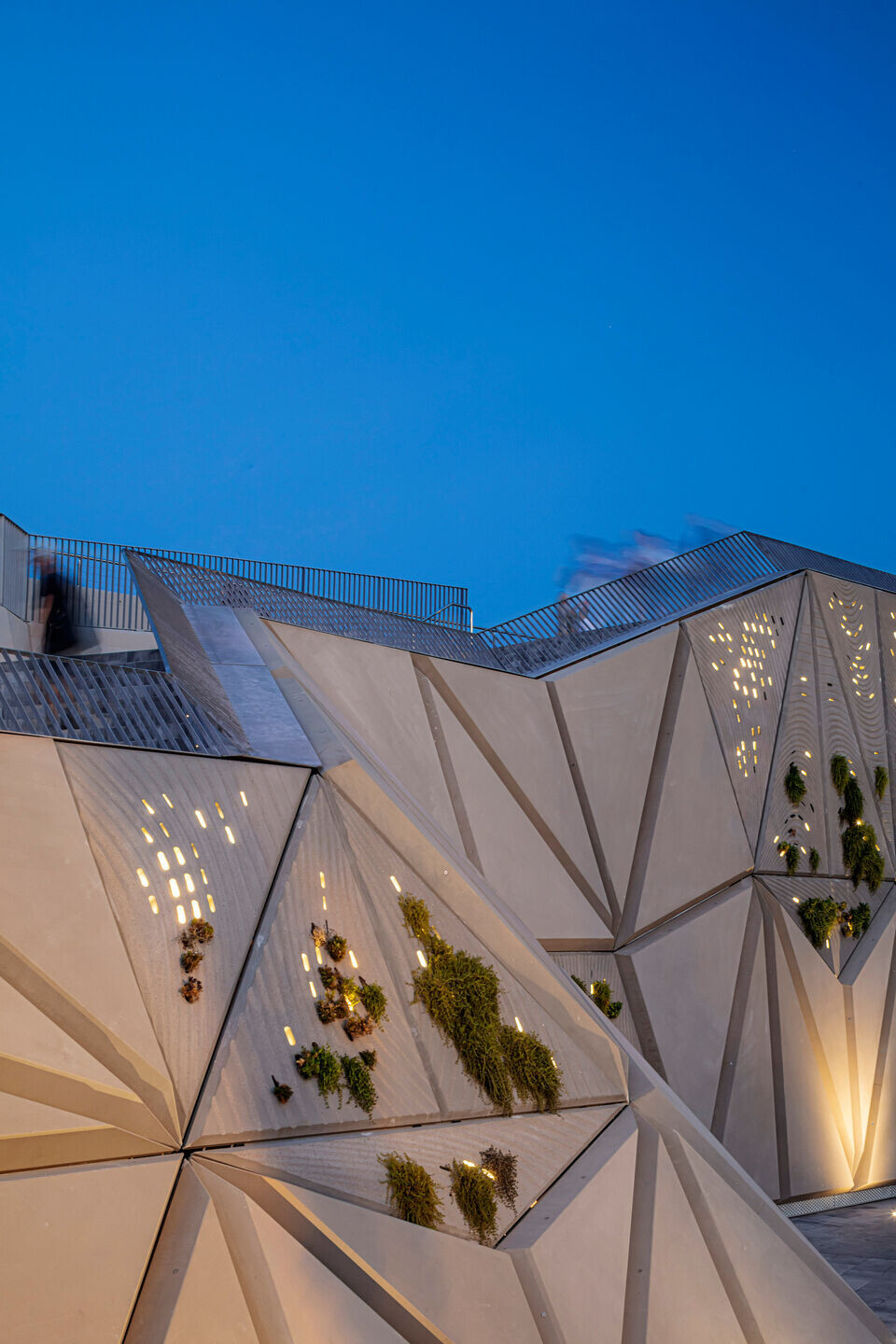
The project includes a reinforced concrete stairway of 48 steps that bridge an 8.50 meter difference in height along a linear route of 48.45 meters.
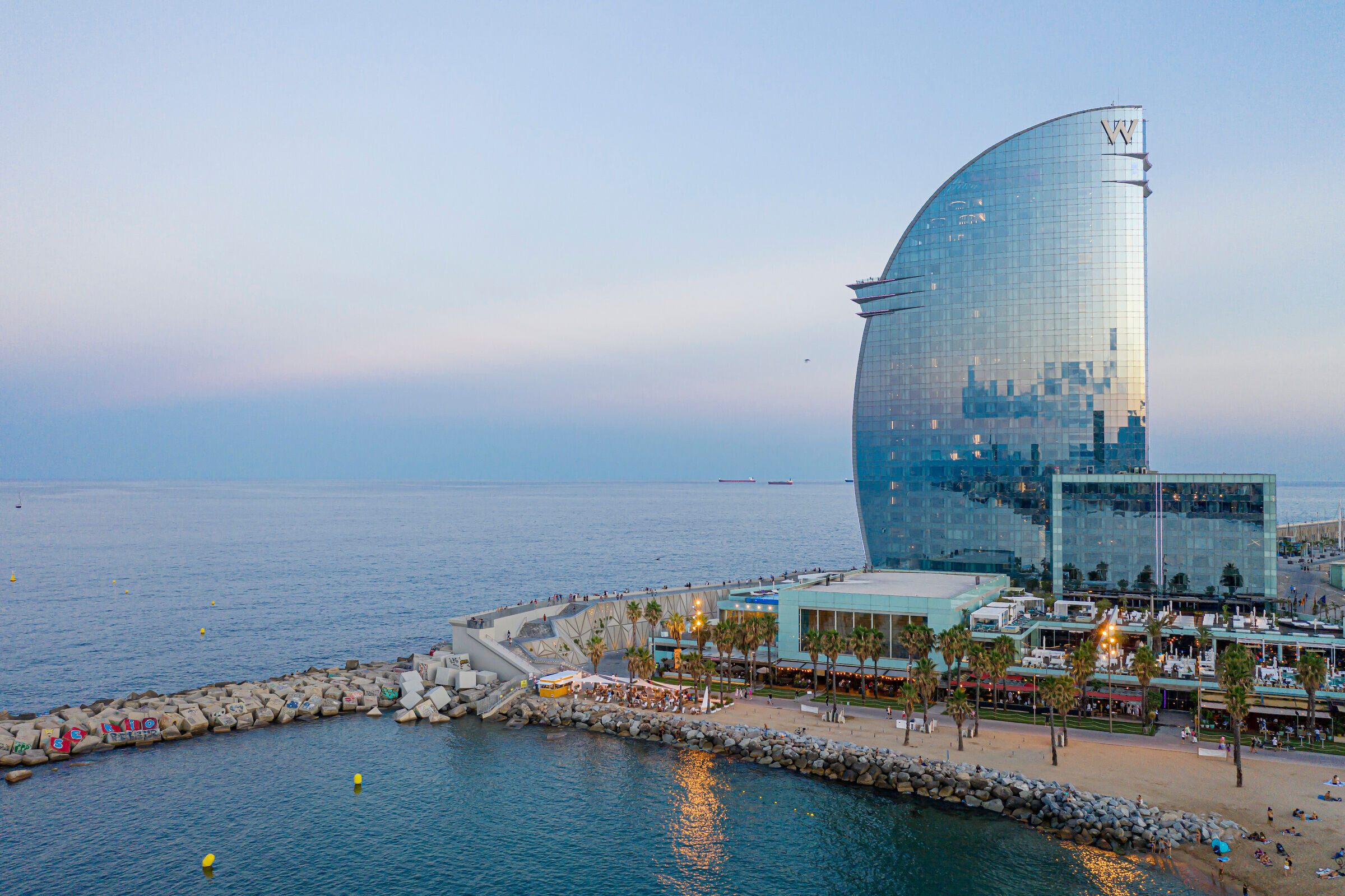
Team:
Architect: External Reference
Architects Project Director: Carmelo Zappulla
Team Leader: Sebastian Amorelli
Design Team: Carmelo Zappulla, Sebastian Amorelli, Ilaria Rampazzo, Ivan Marchuk, Stefano Fontolan
Project Management: Pigra engineering
Civil Engineers: Josep Lluis Blanch, Pigra engineering
General Contractor: Construcia
Photographe: Adrià Goula
